Pâte Sucrée (Sweet Tart Dough)
This post may contain affiliate links. Read my full disclosure policy.
A pâte sucrée is a crisp yet tender pastry crust that is slightly sweet. It maintains its shortbread-like texture when chilled, which makes it ideal for tarts that require refrigeration.
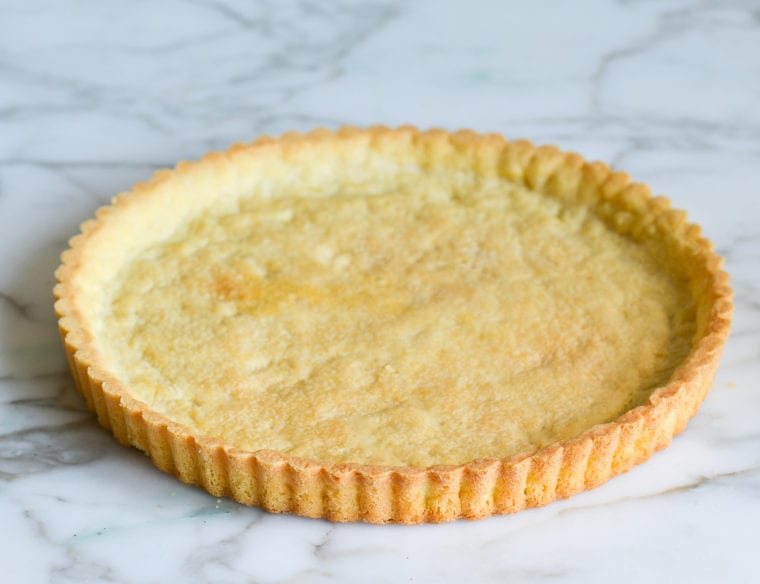
Enriched with egg yolk, butter, and sugar, pâte sucrée is a crisp yet tender pastry crust that is slightly sweet. (In French, pâte means dough and sucrée means sweet.) The dough maintains its shortbread-like texture even when chilled, which makes it ideal for tarts that require refrigeration, like a classic French fruit tart.
Pâte sucrée dough is typically rolled out using a rolling pin, but since it’s very prone to tearing, I find it easier to simply press the pastry into the bottom and up the sides of the pan; there’s also less risk of overworking the dough this way.
This recipe makes enough dough for one 9.5 x 1-inch high fluted tart pan with a removable bottom or a 9-inch pie shell. Feel free to double the recipe and freeze half for another time; it keeps well in the freezer for up to 3 months.
Table of Contents
What You’ll Need To Make Pâte Sucrée (Sweet Tart Dough)
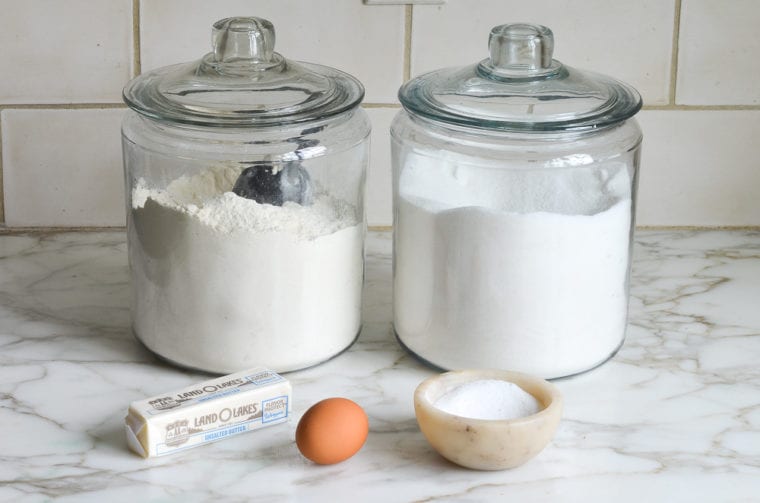
Step-By-Step Instructions
In a stand mixer fitted with a paddle attachment, combine the butter, sugar, and salt.
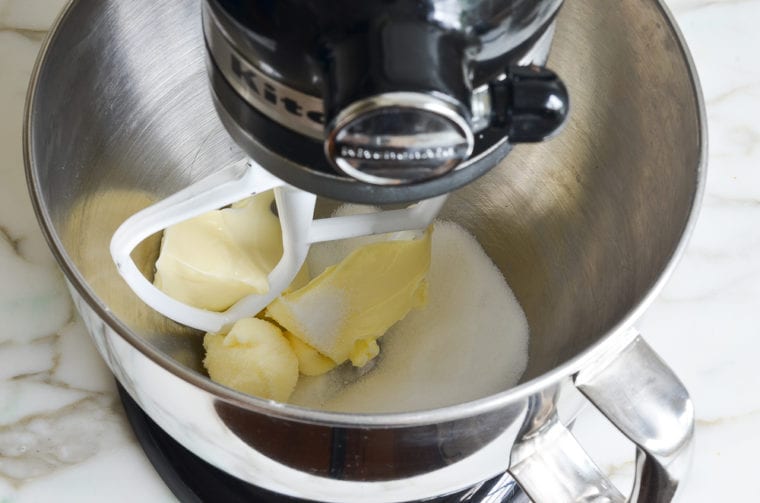
Beat on medium speed until pale and creamy, about 2 minutes. Scrape down the sides and bottom of the bowl with a rubber spatula and add the flour.
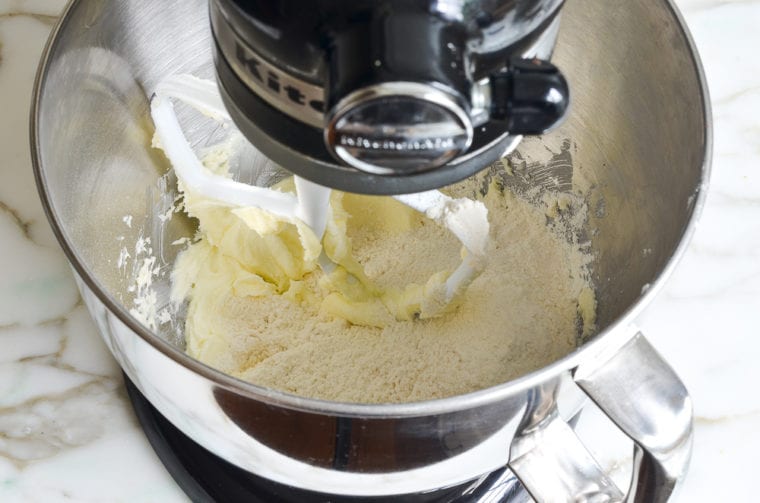
Mix on low speed for about 30 seconds, until the flour is incorporated, and then add the egg yolk.
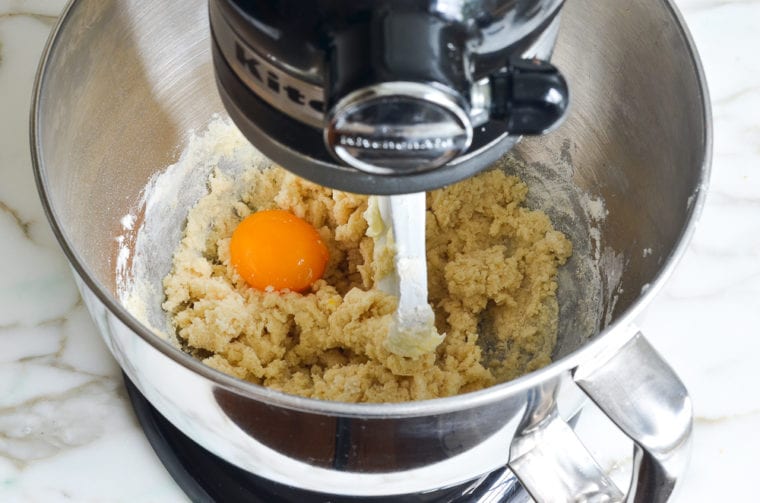
Mix on low speed until the yolk is evenly incorporated and the dough is clumpy, about 30 seconds.
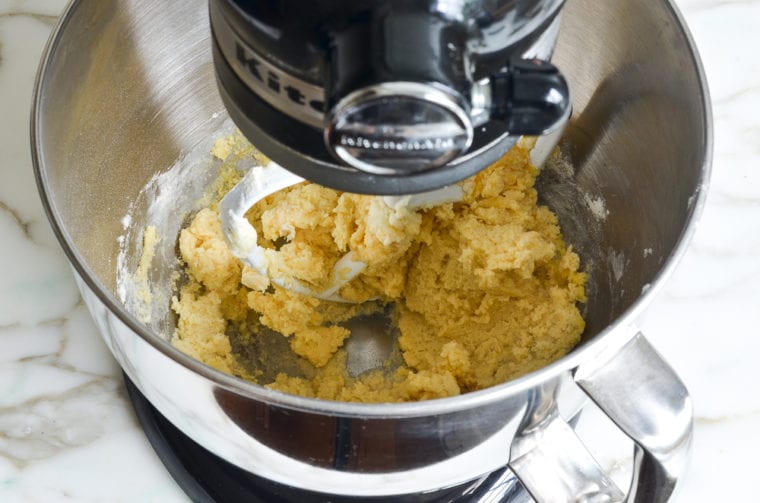
Using your hand, lightly knead the dough into a ball inside the bowl.
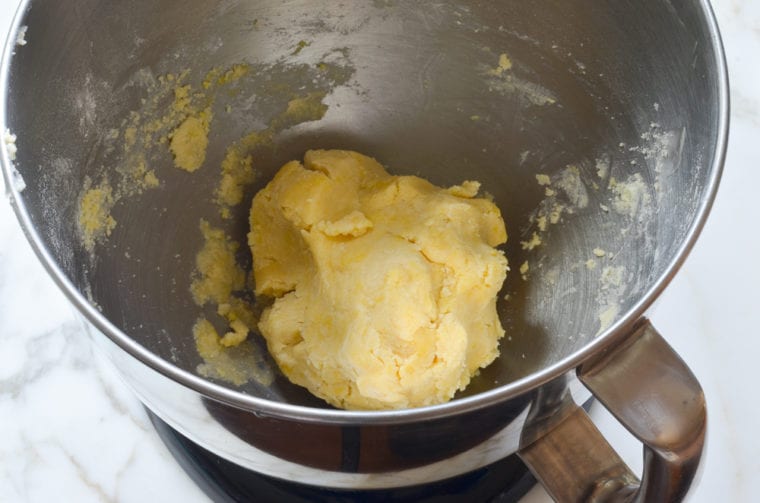
Remove the dough from the bowl, press it into a 6-inch disk, wrap it tightly in plastic wrap, and let it rest in the refrigerator for about 30 minutes. (The dough can be tightly wrapped in plastic and stored in the refrigerator for up to 5 days or in the freezer for up to 3 months. If frozen, thaw it in the refrigerator overnight before using.)
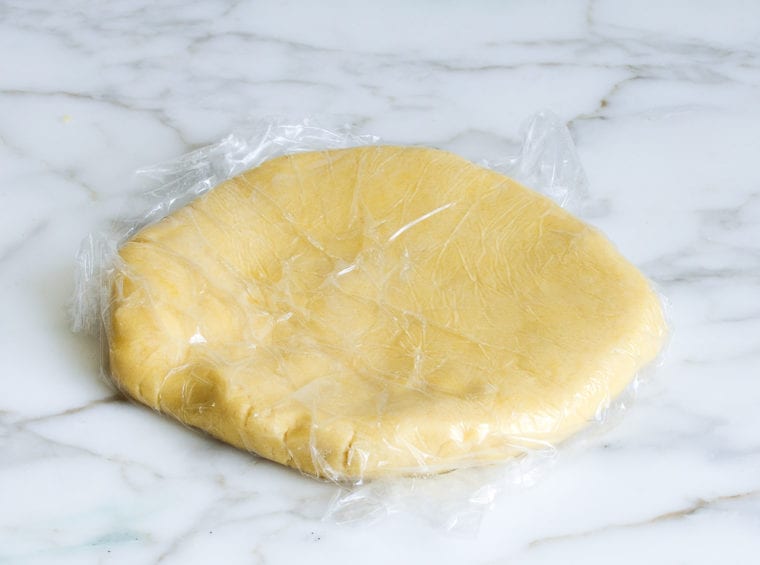
Lightly spray a 9.5-inch tart pan with a removable bottom or a 9-inch pie shell with nonstick cooking spray with flour. Place the chilled dough inside the pan. Pinch off pieces of dough and press them against the sides of the pan to reach about 1/8-inch thick and about 1/8 inch above the rim.
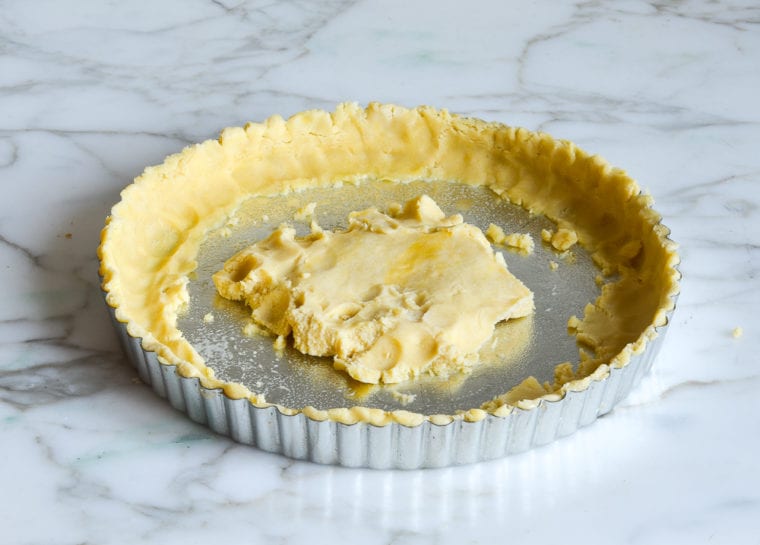
Using the heel of your hand, press the rest of the dough evenly into the bottom of the pan. It will look like a mess, and it may seem like you won’t have enough dough at first, but have faith, it will come together.
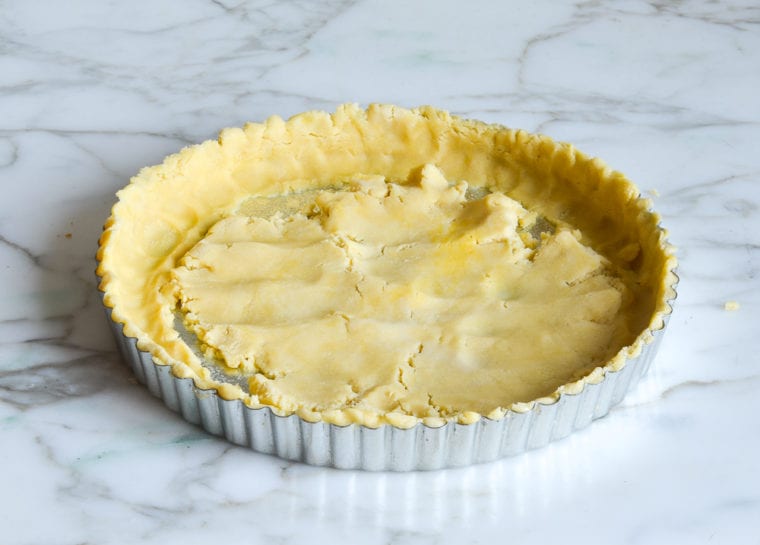
Be sure there are no seams in the dough, and press it squarely along the corners where the bottom meets the sides to avoid extra-thick edges. Use a paring knife to trim the top edge of the dough so it is even with the rim of the pan. Cover with plastic wrap and place in the freezer for about 30 minutes to chill.
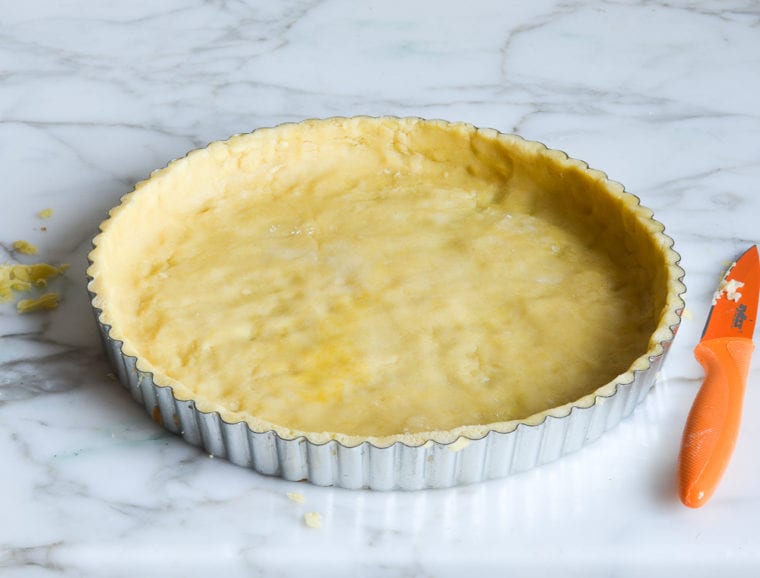
Preheat the oven to 350°F. Place the chilled pâte sucrée on a baking sheet (for easy handling).
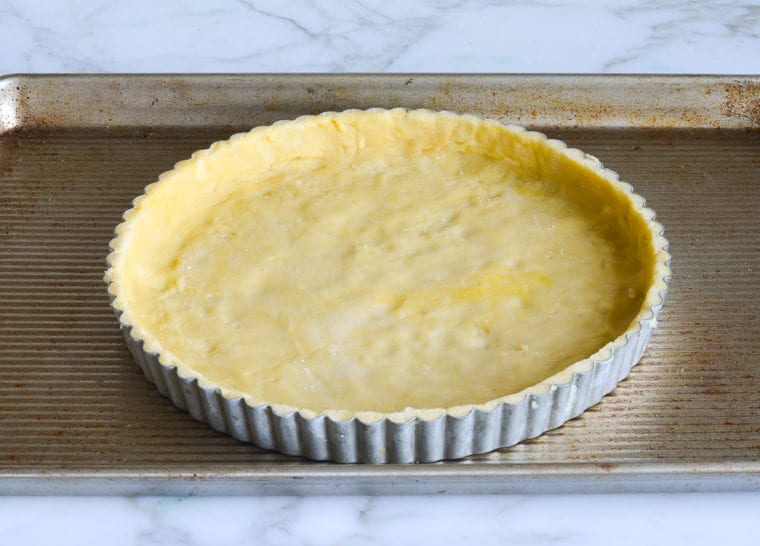
Bake for 23 to 26 minutes, or until lightly golden.
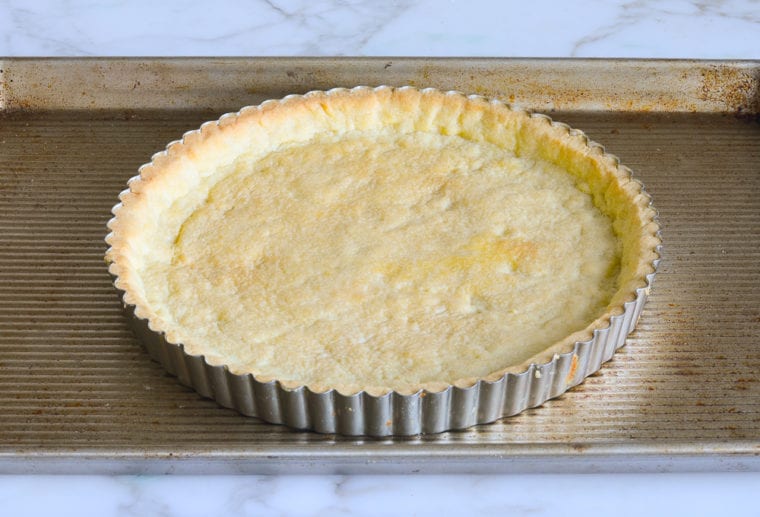
Let cool to room temperature.

You May Also Like
Pâte Sucrée (Sweet Tart Dough)
A pâte sucrée is a crisp yet tender pastry crust that is slightly sweet. It maintains its shortbread-like texture when chilled, which makes it ideal for tarts that require refrigeration.
Ingredients
- 1 stick (½ cup) unsalted butter, at room temperature
- ⅓ cup sugar
- ¼ teaspoon salt
- 1¼ cups all-purpose flour, spooned into measuring cup and leveled-off
- 1 egg yolk
- Nonstick cooking spray with flour, for baking
Instructions
- In a stand mixer fitted with a paddle attachment, cream the butter, sugar, and salt on medium speed until pale and creamy, about 2 minutes. Scrape down the sides and bottom of the bowl with a rubber spatula. Add the flour and mix on low speed for about 30 seconds, until the flour is incorporated. The mixture will look like wet, clumpy sand. Add the egg yolk and mix on low speed until the yolk is evenly incorporated and the dough is clumpy, about 30 seconds. Using your hand, lightly knead the dough into a ball inside the bowl. Remove the dough from the bowl, press it into a 6-inch disk, wrap it tightly in plastic wrap, and let it rest in the refrigerator for about 30 minutes. (The dough can be tightly wrapped in plastic and stored in the refrigerator for up to 5 days or in the freezer for up to 3 months. If frozen, thaw it in the refrigerator overnight before using.)
- Lightly spray a 9.5-inch tart pan with a removable bottom or a 9-inch pie shell with nonstick cooking spray with flour. Place the chilled dough inside the pan. Pinch off pieces of dough and press them against the sides of the pan to reach about ⅛-inch thick and about ⅛ inch above the rim (you'll trim the top later). Using the heel of your hand, press the rest of the dough evenly into the bottom of the pan. (It will look like a mess, and it may seem like you won't have enough dough at first, but have faith, it will come together.) Be sure there are no seams in the dough, and press it squarely along the corners where the bottom meets the sides to avoid extra-thick edges. Use a paring knife to trim the top edge of the dough so it is even with the rim of the pan. Cover with plastic wrap and place in the freezer for at least 30 minutes to chill.
- Preheat the oven to 350°F and set an oven rack in the middle position.
- Place the chilled pâte sucrée on a baking sheet (for easy handling) and bake for 23 to 26 minutes, or until lightly golden. Let cool to room temperature on a wire rack.
Nutrition Information
Powered by ![]()
- Per serving (10 servings)
- Calories: 169
- Fat: 10 g
- Saturated fat: 6 g
- Carbohydrates: 19 g
- Sugar: 7 g
- Fiber: 0 g
- Protein: 2 g
- Sodium: 60 mg
- Cholesterol: 39 mg
This website is written and produced for informational purposes only. I am not a certified nutritionist and the nutritional data on this site has not been evaluated or approved by a nutritionist or the Food and Drug Administration. Nutritional information is offered as a courtesy and should not be construed as a guarantee. The data is calculated through an online nutritional calculator, Edamam.com. Although I do my best to provide accurate nutritional information, these figures should be considered estimates only. Varying factors such as product types or brands purchased, natural fluctuations in fresh produce, and the way ingredients are processed change the effective nutritional information in any given recipe. Furthermore, different online calculators provide different results depending on their own nutrition fact sources and algorithms. To obtain the most accurate nutritional information in a given recipe, you should calculate the nutritional information with the actual ingredients used in your recipe, using your preferred nutrition calculator.

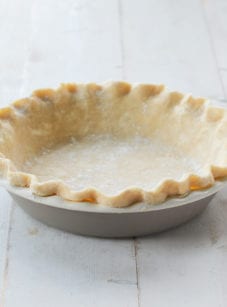

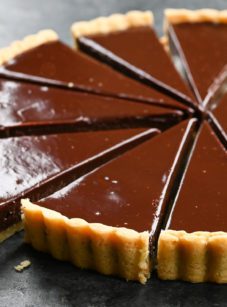
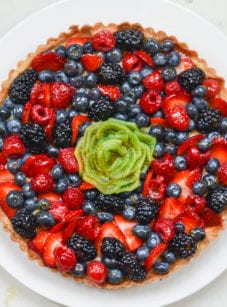
Can this crust be used for a plum tart with a layer of pastry cream which would then be baked?
Sure, Carol, that should work. Please LMK how it turns out!
Hi Jenn, Thank you for sharing this detailed Tart recipe and photos – they make such a difference for us visual learners! I served your Classic French Fruit Tart at our weekly family dinner and another Jenn Segal success was celebrated!
This time, I was hoping to use the dough in 4 3/4″ x 3/4″ tart pans. Do you think it will work? I would greatly appreciate any hints you have, such as the number of tartlets it would make and how long to bake them. Would this dough recipe double well or should I make multiple batches?
Also, do you think using powdered sugar would work or would that be a bad idea?
I know this is a lot of questions. Thank you for ‘any help’ you can afford to give. YOU are the best!
Hi Lori, Glad the fruit tart came out nicely! I think it will work to make smaller versions and that you’d have enough dough to make 3 or 4. The bake time should be the same. And powdered sugar will work here; it will make the crust a tiny bit more tender.
Hi Jen,
I absolutely adore, adore, adore, this recipe and I made it twice this weekend!! I’m having trouble with separating the bottom, circle part of the pan from the crust. First time, I thought it was because I didn’t dust with flour after applying the cooking spray. Second time, I floured, but the bottom still got stuck, really stuck. Where I had to serve with the bottom still attached (otherwise the crust would break).
I did chill the crust for the 30 minutes in the freezer but on a baking pan, could that be my problem? Is the pan the problem? Any advice is appreciated!
Hi Angela, glad you like it but sorry you’re having a problem with the crust sticking! Just so you know, I serve this directly from the base. I don’t believe the baking sheet in the freezer is the issue, but you may want to consider investing in a new tart pan.
I made the dough and refrigerated to use it the next day. Now it’s hard as a rock. Is that normal? I followed the instructions precisely.
Hi Isabella, Yes that’s normal – let it sit out at room temp for a bit, then knead with your hands until it’s pliable enough to work with.
Hi Jan, Thank you for the recipe. What is the reason why Pâte Sucrée doesn’t need blind baking?
Hi Dan, the crust does get baked. (See the last paragraph of the instructions.)
Good morning
I’m just wondering if the shells can be baked & then frozen? Thankyou
Hi Kiona, If you want to freeze it, I’d freeze it before baking. You can either freeze the dough while it’s still in disk form or already pressed into the pie pan.
I could kiss you !! I am NOT a good baker but this step by step recipe with pictures was so good even I could do it. No shrinkage at all! Your method of building the pastry from the rim in is genius ! The recipe I used for the pear and Frangipane crostada did not require blind baking which worried me a bit but I followed the recipe regardless. I’ve yet to cut into it so let’s see but the outside looks superb. Thank you for sharing this !
Wonderful pastry dough! Perfectly crisp and flaky. Holds shape well and bakes up perfectly. I’ve made this several times and LOVE this recipe!
This crust was amazing!
My pâte sucrée recipe is essentially the same as yours. I never bother to chill it. All ingredients are at room temperature (about 75 deg F, 23 C). I bake it until the edges shrink from the pan. I always line the bottom with parchment. Although I roll out the dough it’s tender enough that it falls apart so I end up pieceing it like you do. I pre-cook all my tart shells even for savory. I reduce the sugar to about 1 TB for pâte brisée for savory items like quiche. I also mix using the paddle until the dough cleans the bowl. An easy way to know when the dough is done.
Hi love your tart recipe…what setting for convection please?
Hi Anna, When using the convection setting, the rule of thumb is to reduce the temp by 25°F.